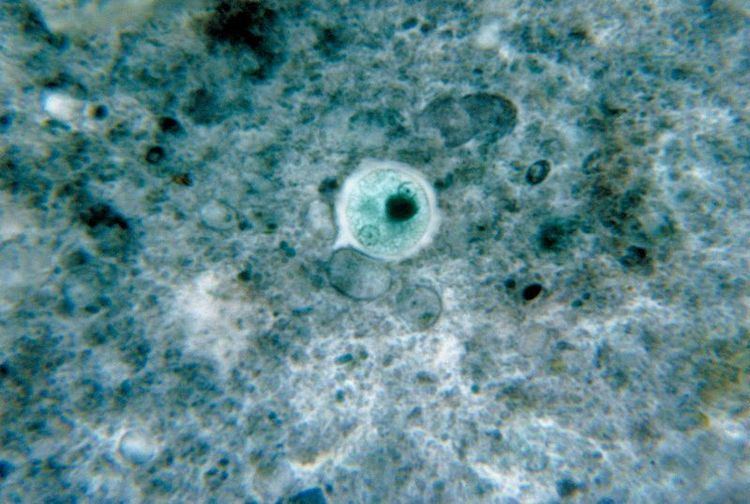Domain Eukaryota Rank Species | Order Amoebida | |
 | ||
Similar Entamoeba, Entamoeba moshkovskii, Entamoeba hartmanni, Entamoeba gingivalis, Entamoeba polecki | ||
Entamoeba invadens vk 1 ns a espinosa
Entamoeba invadens is an amoebozoa parasite of reptiles, within the genus Entamoeba. It is closely related to the human parasite Entamoeba histolytica, causing similar invasive disease in reptiles, in addition to a similar morphology and lifecycle.
Contents
Disease and lifecycle
Entamoeba invadens is a causative agent of amoebiasis in reptiles, such as snakes and lizards. Reptile amoebiasis can be treated with metronidazole, an amoebicide drug.
Entamoeba invadens is primarily transmitted via the ingestion of contaminated faeces, also known as the faecal-oral route. It has two distinct lifecycle stages. The first is a resistant cyst stage, which is transmitted outside of a host, and is also known as the infectious stage. The second is the motile trophozoite stage, which is released from the cyst following introduction into the host environment, and is the disease-causing (pathogenic) stage.
While there is no specialised intermediate vector stage, contaminated faeces can be transmitted to food sources by some arthropods (e.g. flies and cockroaches), where E. invadens may be ingested. Symptomless carriers of E. invadens, such as crocodilians, may act as a reservoir of infection, particularly in captivity.
Use in research
Entamoeba invadens has been used as a model system for studying development, and encystation in vitro, particularly due to difficulties associated with studying encystation in the closely related human parasite E. histolytica.
For instance, it was found that, during the conversion from the tetraploid uninucleate trophozoite to the tetranucleate cyst, homologous recombination is enhanced. Expression of genes with functions related to the major steps of meiotic recombination also increased during encystations. These findings in E. invadens, combined with evidence from studies of E. histolytica indicate the presence of meiosis in the Entamoeba.
Genome
The genome of E. invadens, sequenced in 2013, was approximately 40 MB in size, and predicted to contain 11,549 genes. Overall, the genome was considered to be highly repetitive. Many genes occurred in large, multi-gene families.
